Rhododendron katevbinsky: description of varieties, planting and care

Rhododendron Katevba was brought to Europe from North America in 1806. The plant immediately won the hearts of flower growers for its decorative value. This flower is used to decorate parks, personal plots. And the bred winter-hardy varieties allow it to be cultivated in central Russia.
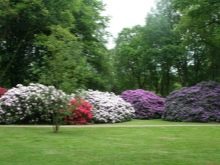
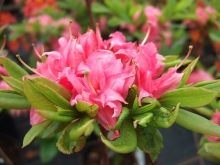
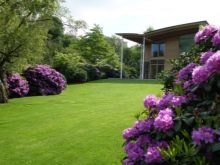
Description
Rhododendron is a shrub reaching a height of 4-4.5 m. Its leaves are elongated, rich green color with a glossy sheen. The lifespan and growth of a rhododendron is approximately 100 years. The plant appears uniquely beautiful during flowering, when the entire bush is literally dotted with flowers with a radius of up to 3 cm. Their shape resembles a bell, they are collected in bunches of about 20 pieces. The color of the flowers is diverse:
- White;
- cream;
- purple;
- red with a purple tint;
- purple;
- lilac.
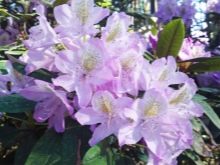
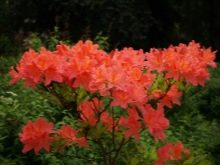
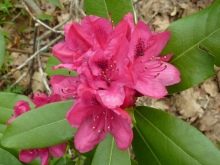
Katevbinsky rhododendron is planted in the alleys near the benches, at the bends of garden paths. This light-loving plant, however, can tolerate light diffused by the foliage of trees. The only thing that the shrub is afraid of is drafts, so carefully choose a place for planting it. Rhododendron Katevbinsky was taken by breeders to develop the following varieties:
- "Grandiflorum";
- "Purpureum";
- Roseum Elegance;
- Album;
- "Burso";
- Homebush.
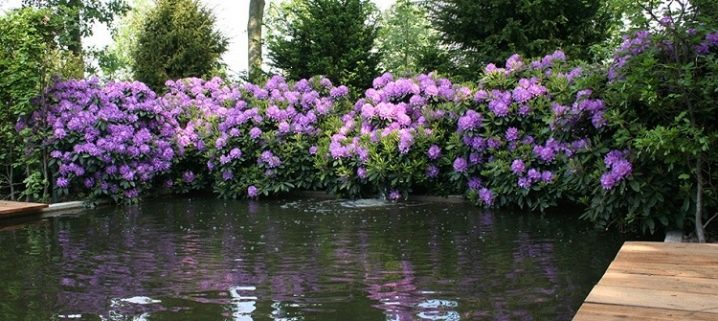
Grandiflorum ("Grandiflorum")
It is the most common rhododendron variety and was one of the first to be bred. It is distinguished by resistance to frost up to -32 C, rapid growth. The crown span is approximately 3.5 m and the height is 3 m. The flowers have a lilac shade with orange specks, there is no smell. Inflorescences appear in early summer.
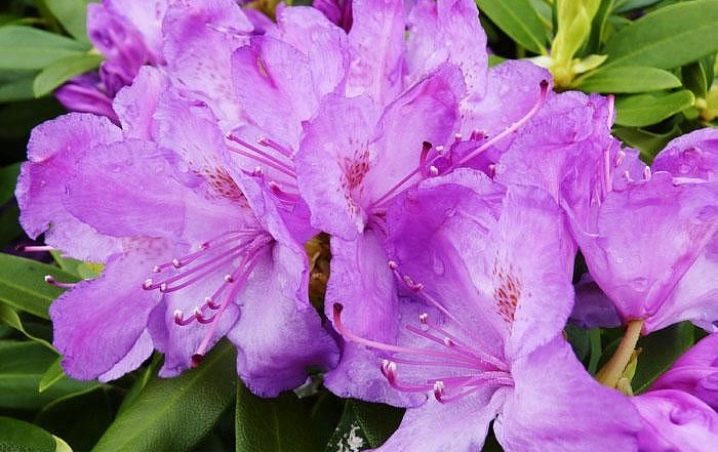
Purpureum ("Purpureum")
One of the young varieties of rhododendron, bred on the basis of "Grandiflorum". Therefore, it is also distinguished by frost resistance up to -30 C, strong and tough shoots. In the Urals, the height is 1.5 m, and in warm regions up to 2.5-3.0 m. In winter, it does not shed leaves. Blooms in June with lilac-purple flowers.
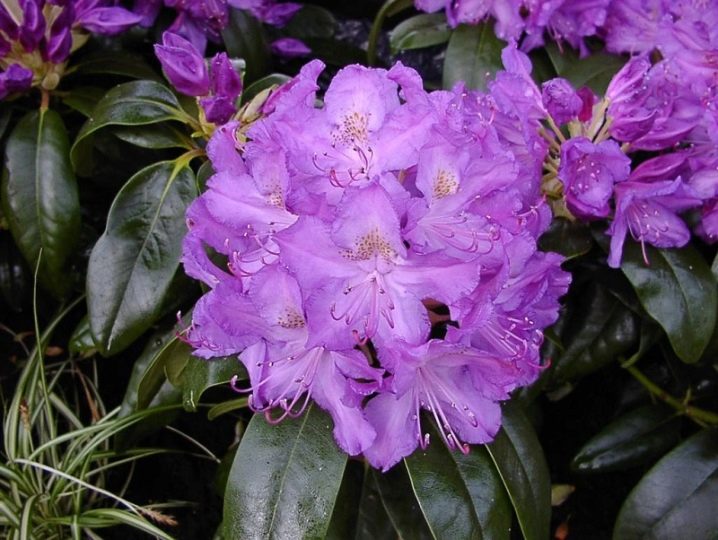
Roseum Elegans
It is distinguished by slow growth, delicate pink-purple inflorescences, resistance to frost, intolerance to winds and bright spring sun. Spreading shrub, its shoots are strongly branched.
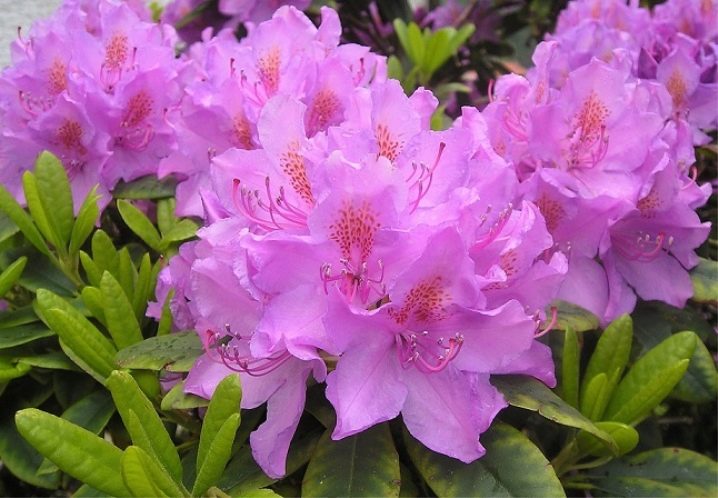
Album
So named for the snow-white flowers that have an olive speck. It reaches a height of 2 m. It is resistant to frost, blooms in late spring - early summer. It can be used both for single planting and for creating compositions.
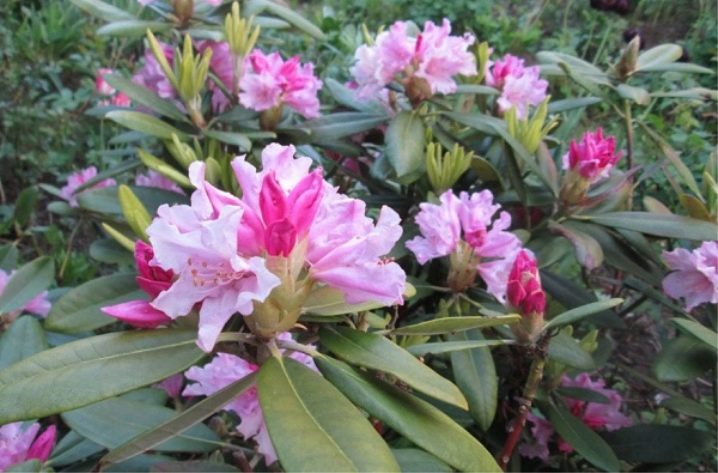
Boursault
The variety was bred in 1849 for cultivation in the northeastern United States. It is a fast-growing shrub from 2 m wide, up to 2 m high. It blooms in early summer with dark purple buds.
It tolerates frost and other adverse weather conditions well.
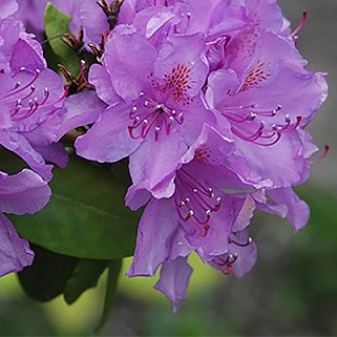
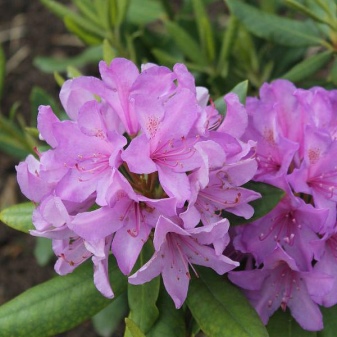
Homebush
This is the second name for deciduous rhododendron, which distinguishes it from previous evergreen varieties. It grows at an average rate and by the age of 10 it reaches 1.5-2.0 m. It has original double, pointed pink flowers, collected in globular inflorescences. Withstands temperatures up to -30 C, does not need shelter.

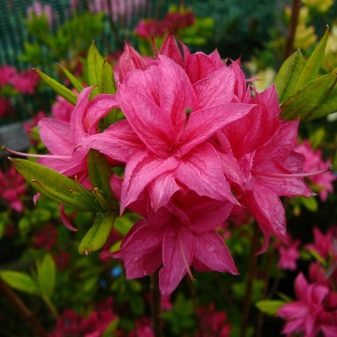
Landing
Rhododendron Katevba is sold as seedlings. In order for it to please you for a long time, you need to know a few secrets of choice.
- If you live in central Russia and to the north, then buy a shrub grown in nurseries in Finland.
- Do not purchase rooted cuttings and adult bushes, they do not take root well when planting.
- The best choice is a 2 year old seedling with a root system placed in a container.
- Examine the rhododendron leaves. They should be healthy and evenly colored. If there are signs of necrosis, then refrain from buying.
You can plant a plant in the ground both in spring and summer until the end of August. The place should be lit with diffused light, a sprawling tree will make a good neighborhood to the Katevba rhododendron. It is best if it is a representative of conifers. Maintain a distance of about 2 meters from tree to bush, then the neighbors will not interfere with each other. Do not place rhododendron next to a plant that has shallow roots. This inhibits the growth of the bush. Ideal neighborhood - spruce, pine and larch.
The rhododendron needs to be protected from cold winds.

Priming
Carefully consider the choice of soil for your pet. It should be slightly acidic, with a pH of 4.5 to 5.5. For successful growth, the soil should consist of peat, coniferous humus, sand in a ratio of about 3: 2: 1. The industry also produces a ready-made substrate. If the search for coniferous litter is difficult, you can prepare humus from rotted sawdust and leaves. All this will allow the soil to have an acidic reaction, air permeability, and increased moisture holding capacity.
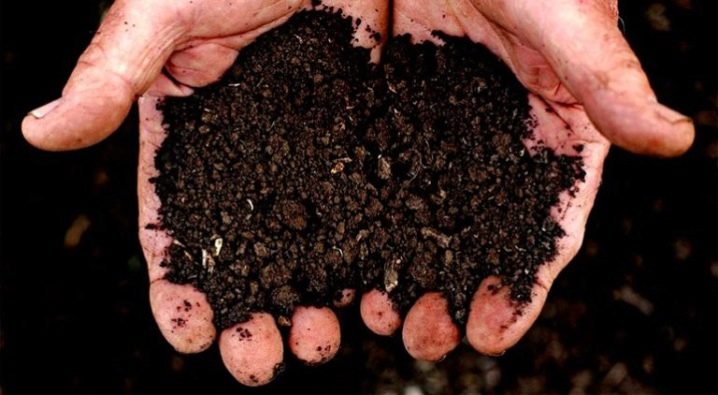
Landing pit
The preparation of the pit must be done 3-4 weeks before the expected planting of the plant. Since the shrub has a superficial root system, it does not need a large hole. Its ideal dimensions are 0.6 m in diameter and 0.4 in depth. You need 9 buckets of fertile substrate, which fill the dug hole.
After purchasing a rhododendron, dip its rhizome in a bucket of water until no more air bubbles. Dig a hole that is comparable to the size of the roots, set up a seedling and cover with soil. Proceed carefully to avoid damaging the root system.
Remember that the shrub must be planted at the same depth as it grew in the container. After the end of the work, watering and mulching with needles is necessary.
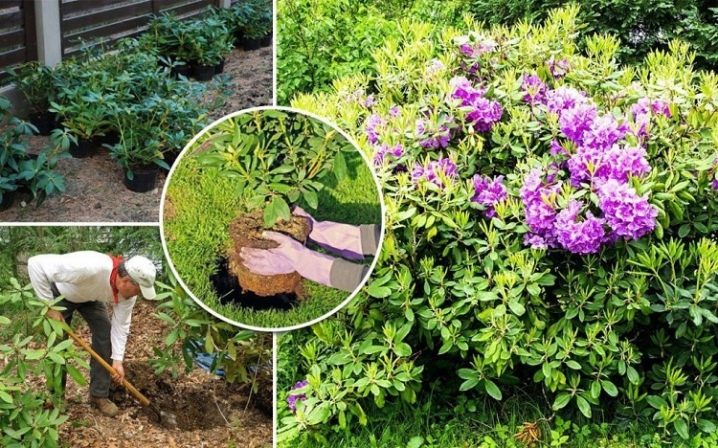
Care
For successful growth, it is necessary to comply with the conditions for optimal development. For a rhododendron, watering, proper weeding, and regular feeding are important.
Watering
The shrub likes abundant deep watering 1-2 times a week. The earth should not dry out, it has a detrimental effect on your pet. You will need up to 50 liters of water for one irrigation. Do not pour everything out at once, wait until the previous portion is absorbed, only then add a new one. It is best if the water is rainwater. Do not water the rhododendron with tap water that has not been pretreated. Let the water stand for a few days, and if it is too hard, add 2 tablespoons of 9% acetic acid to 50 liters of water or 4 grams of citric acid to 10 liters.
If you do not acidify the water, then you must do this with the soil. A great option is to use colloidal sulfur. For a young plant, take 40 g of the preparation, for an adult at least 80 g. Pour sulfur into the root circle 1-2 times a year. This will help maintain the necessary acidity in the soil. Alkalization of the soil is dangerous for rhododendron by manifestations of chlorosis. In this case, the leaves begin to turn yellow and fall off. The plant gradually dies.
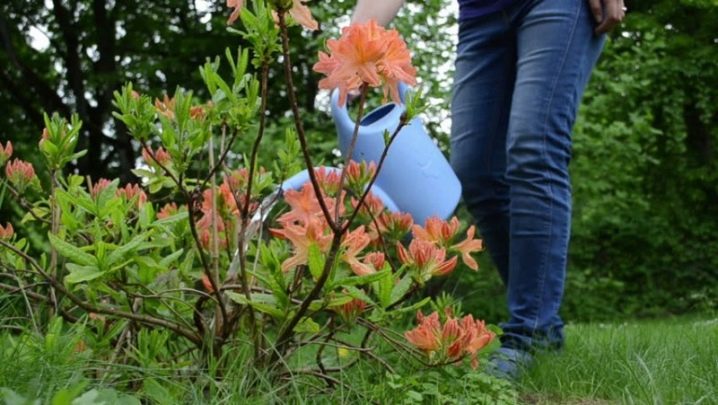
Weeding
Katevba rhododendron does not tolerate soil loosening. This is due to the fact that it is closely related to the mycelium, which is easy to damage during cultivation. Therefore, any weeds are removed manually or treated with herbicides.
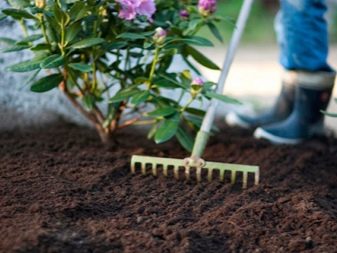
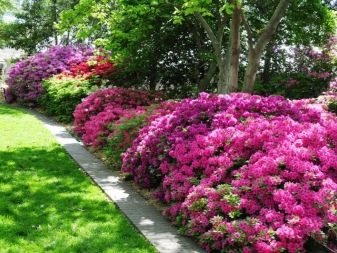
Top dressing
The plant does not need additional substances during the first year of life. Mineral fertilizers are applied starting from the second year. Ammonium nitrate is applied in early spring at a rate of 20 g / l. Before flowering, use a special mineral complex, and in August - potassium sulfate, it will help the Rhododendron increase its frost resistance.
Any fertilizer is applied to wet soil and diluted in water. There are also specially designed vitamin blends that are purchased at any flower shop. In order for your pet to winter successfully, you need to protect it from the winds. Mulch the root circle, tie the branches to the support. The bush hibernates without special shelter.
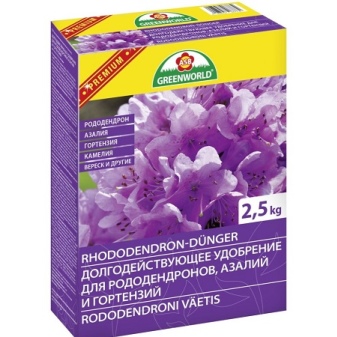

Reviews
The owners of Katevba rhododendron are very pleased with this plant. Its winter hardiness is amazing, because it can withstand frosts down to -30 C. This shrub looks perfect in the garden, suitable for decorating paths and secluded places. And its flowering always attracts all eyes. Unpretentious care is another plus among the many advantages of rhododendrons.
The shrub is ubiquitous, many of its varieties have been bred, among which even the most fastidious florist will be able to find the right one. Diseases very rarely affect even young plants.
The most common are fungal infections. But even in that case, for recovery, it is enough to treat the bush with fungicides several times.
For information on whether to be afraid of winter when growing rhododendron, see the next video.





































































































The comment was sent successfully.